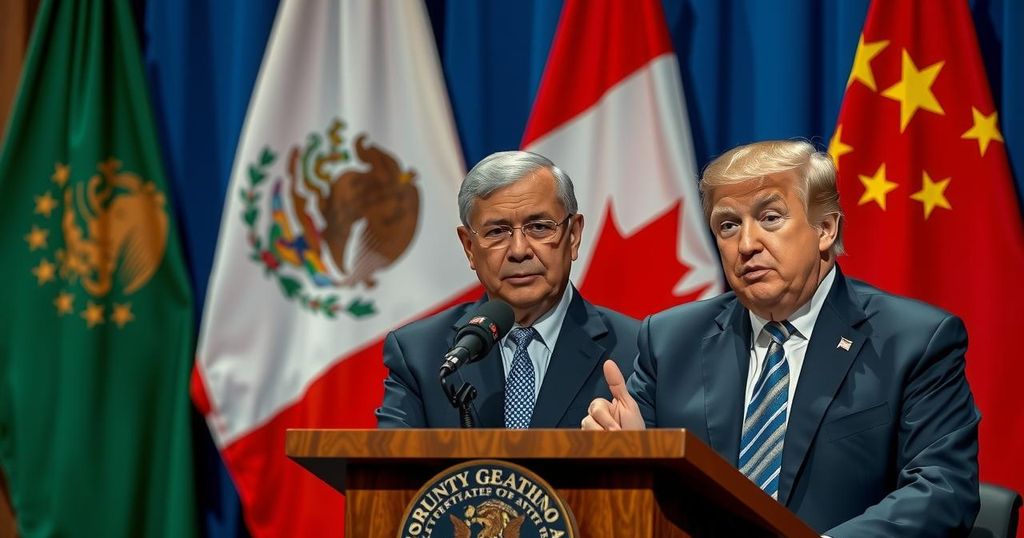President-elect Donald Trump plans to impose significant tariffs on imports from Mexico, Canada, and China as part of his economic strategy. Effective from his first day in office, these tariffs aim to address issues of illegal immigration and drug trafficking. Trump proposes a 25% tariff on goods from Mexico and Canada and a 10% increase on imports from China, all while managing concerns about potential inflation and retaliatory trade measures.
President-elect Donald Trump has outlined an ambitious plan to significantly increase tariffs on imports from Mexico, Canada, and China starting on the first day of his administration. He asserts that this initiative is a response to the challenges posed by illegal immigration and the influx of drugs, particularly Fentanyl, from these countries. Trump intends to impose a 25% tariff on all products from Mexico and Canada, which will remain until these issues are resolved. Additionally, he proposes raising tariffs on Chinese goods by 10% above existing levels to curb the flow of illegal narcotics. Trump’s economic strategy is reminiscent of his previous term, where he utilized tariffs as a means to stimulate domestic manufacturing while also addressing revenue shortfalls. Economists, however, express concerns regarding the inflationary impact of such tariffs, especially given that the costs are ultimately borne by American consumers. Although Trump’s administration previously faced challenges regarding foreign retaliation and trade wars—which dampened the effectiveness of tariffs—he is now advocating for even more substantial tariffs during his second term, citing figures as high as 60% on Chinese imports. The ramifications of these proposals on the economy and international trade relations remain to be seen as developments unfold.
The proposed increase in tariffs on goods from Mexico, Canada, and China comes in the context of broader discussions about international trade policies. Tariffs are traditionally used to protect domestic industries from foreign competition and to generate revenue. However, they can also lead to retaliatory tariffs from affected countries, resulting in a trade war that can adversely impact domestic manufacturers and consumers. Trump’s history with tariffs during his first presidency included significant levies on steel and aluminum imports, which led to responses from countries like China, complicating economic relations. As Trump prepares for his second term, he appears poised to take a more aggressive stance on tariffs, reflecting his long-held belief in their utility in negotiating trade agreements and addressing multiple systemic issues related to immigration and drug trafficking.
In summary, President-elect Trump’s commitment to imposing substantial tariffs on imports from Mexico, Canada, and China signals a continuation of his previous economic policies aimed at reshaping trade relations. While his administration plans to target illegal immigration and drug trafficking through these economic measures, the broader consequences of such tariffs could lead to inflation and retaliatory actions from other countries, potentially igniting a renewed trade war. As the situation evolves, it will be crucial to monitor the implications of these proposals on the U.S. economy and its international standing.
Original Source: edition.cnn.com






